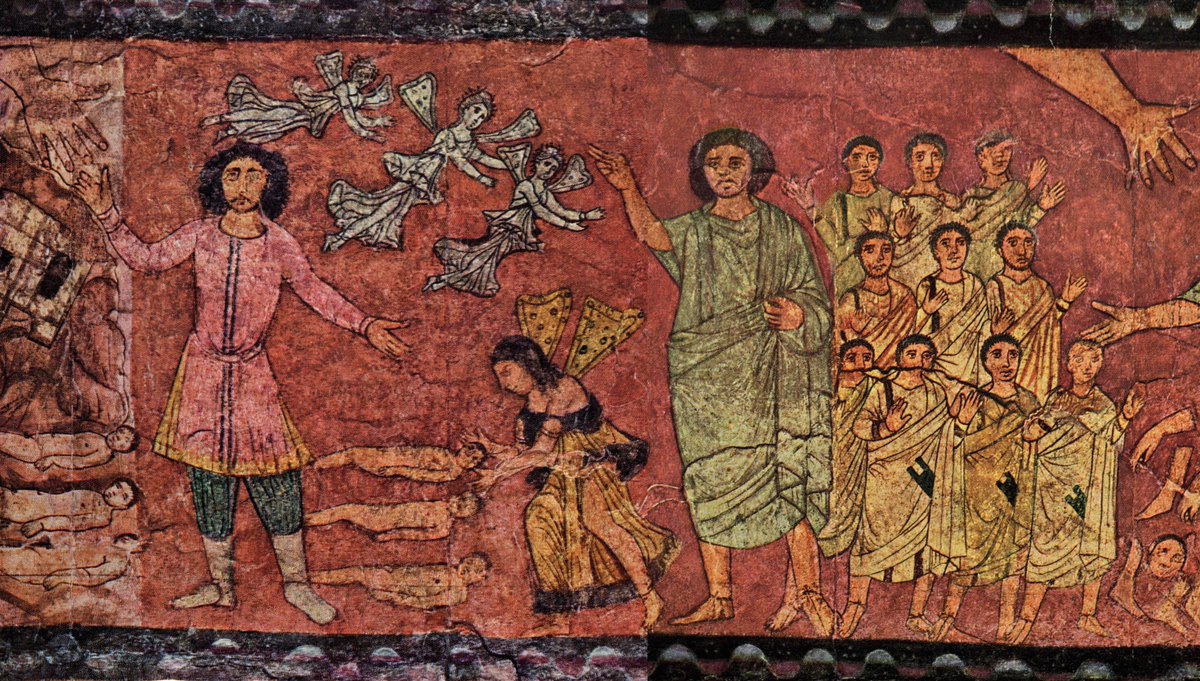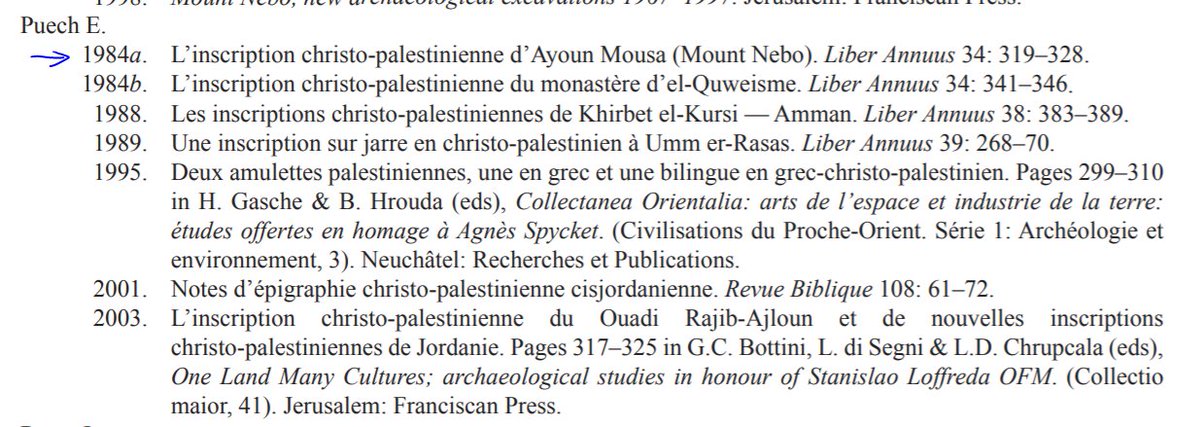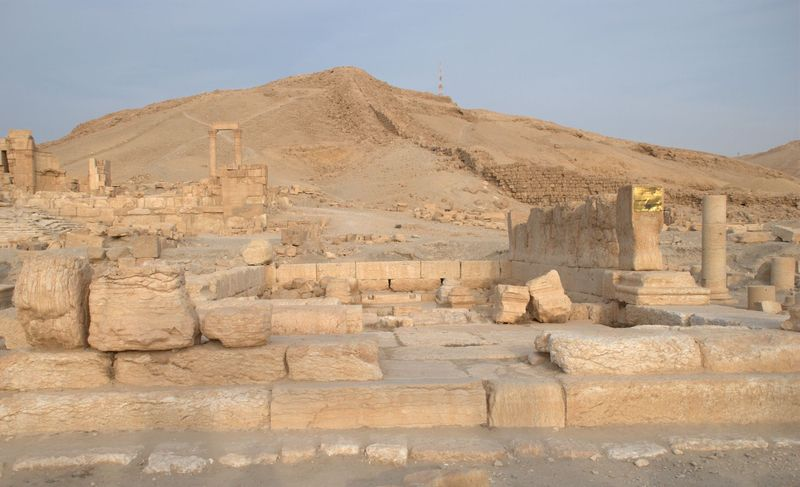
The Naqad Islamic Studies server is an open resource server for print and online collections that support Late Antique, Near Eastern and Islamic Studies.
How to get URL link on X (Twitter) App



 Certain outliers were noticed and discarded (Sanaa Unified Kiel is too early, Sanaa fol11 too late).
Certain outliers were noticed and discarded (Sanaa Unified Kiel is too early, Sanaa fol11 too late).



 Today, there is overall academic consensus that the differences between lower and upper Sana'a are not simply attributable to oral transmission error.
Today, there is overall academic consensus that the differences between lower and upper Sana'a are not simply attributable to oral transmission error. 


 An indication about its meaning might be found in a text from Epihanus (II.22.11) (3-4th C).
An indication about its meaning might be found in a text from Epihanus (II.22.11) (3-4th C). 

 Siyyoni (ca 1400 CE) claims to have seen a now-lost midrash on the Song of Songs 6:12 which asserted that "it was Micah who raised up this [calf] form. While they [the Israelites] were crossing the Red Sea, he contemplated the Merkabah [God's throne-chariot, Ezekiel 1:4–26]."
Siyyoni (ca 1400 CE) claims to have seen a now-lost midrash on the Song of Songs 6:12 which asserted that "it was Micah who raised up this [calf] form. While they [the Israelites] were crossing the Red Sea, he contemplated the Merkabah [God's throne-chariot, Ezekiel 1:4–26]."

 Nehemiah's background is speculative.
Nehemiah's background is speculative.
 Genesis 14:14 "And he [Abraham] fought against them, he and his servants, "by night" [Hebrew 'lailah'] and smote them."
Genesis 14:14 "And he [Abraham] fought against them, he and his servants, "by night" [Hebrew 'lailah'] and smote them."

https://twitter.com/NaqadStudies/status/1242651994789154819At the outset, we should say that we used imprecise language when paraphrasing Youssef-Grob.
https://twitter.com/therealsidky/status/1242792226595508224?s=20

 Many scholars see C14 dating as too technical or unreliable, bearing results that are too hard to evaluate or too open to speculative interpretation.
Many scholars see C14 dating as too technical or unreliable, bearing results that are too hard to evaluate or too open to speculative interpretation.


 1. Puech (1984a) argues that this is an Aramaic rendering of the Greek Saōla. This would be satisfying in that the text would then be as simple bilingual one, conforming to to the evident symmetry of the mosaic as a whole (two animals either side of a central large tree, etc).
1. Puech (1984a) argues that this is an Aramaic rendering of the Greek Saōla. This would be satisfying in that the text would then be as simple bilingual one, conforming to to the evident symmetry of the mosaic as a whole (two animals either side of a central large tree, etc). 



 One noteworthy feature is the use of الاله, phonetically spelling Allāh with an alif for the ā.
One noteworthy feature is the use of الاله, phonetically spelling Allāh with an alif for the ā. 



 Translated:
Translated:




 Case 1: Pre-Islamic Burial in Aila
Case 1: Pre-Islamic Burial in Aila
 One problem in equating Uzair with Ezra (by interpreting the name as a diminutive and derogative form of ‘Azr) is that no Jewish literature or tradition exists that attests to Ezra’s divination.
One problem in equating Uzair with Ezra (by interpreting the name as a diminutive and derogative form of ‘Azr) is that no Jewish literature or tradition exists that attests to Ezra’s divination.



 In the Roman period, the city was known as Aila.
In the Roman period, the city was known as Aila. 

 Doctrina Jacobi (D. Jacobi) is set in the year 634 CE, and probably written within a few years of this date. The relevant passage purports to be a letter from a Palestinian Jew named Abraham:
Doctrina Jacobi (D. Jacobi) is set in the year 634 CE, and probably written within a few years of this date. The relevant passage purports to be a letter from a Palestinian Jew named Abraham: 

 Damascus coins issued their sanctioned archetype, which was then followed by all other minting cities of the empire.
Damascus coins issued their sanctioned archetype, which was then followed by all other minting cities of the empire. 
 The inscription begins with the Basmala, in the form we know it today.
The inscription begins with the Basmala, in the form we know it today. 


 The traditional interpretation is that the word Muhajirūn comes from the root hajara, "to emigrate, to go into exile." These were the émigrés who left Mecca with Mohammad.
The traditional interpretation is that the word Muhajirūn comes from the root hajara, "to emigrate, to go into exile." These were the émigrés who left Mecca with Mohammad. 

 The temple, dedicated between 123-164 CE by a certain Taimarsū, a citizen of Palmyra, has the shape of a rectangle with a colonnaded porch, facing a main street of the city's center. This temple of Allat-Athena has two striking features.
The temple, dedicated between 123-164 CE by a certain Taimarsū, a citizen of Palmyra, has the shape of a rectangle with a colonnaded porch, facing a main street of the city's center. This temple of Allat-Athena has two striking features. 

 The document mentions ʿAbdullāh b. Jābir, who was commanding the Caliphate expeditionary force into Egypt.
The document mentions ʿAbdullāh b. Jābir, who was commanding the Caliphate expeditionary force into Egypt. 


 Another relief of hard limestone, found in the temple of Bel at Palmyra, bears an inscription that mentions Raḥim in the company of a devotee and two deities: the Gad of the Gardens and Ars̩u. Raḥim would have been to the left of these three figures, and is regrettably lost.
Another relief of hard limestone, found in the temple of Bel at Palmyra, bears an inscription that mentions Raḥim in the company of a devotee and two deities: the Gad of the Gardens and Ars̩u. Raḥim would have been to the left of these three figures, and is regrettably lost. 